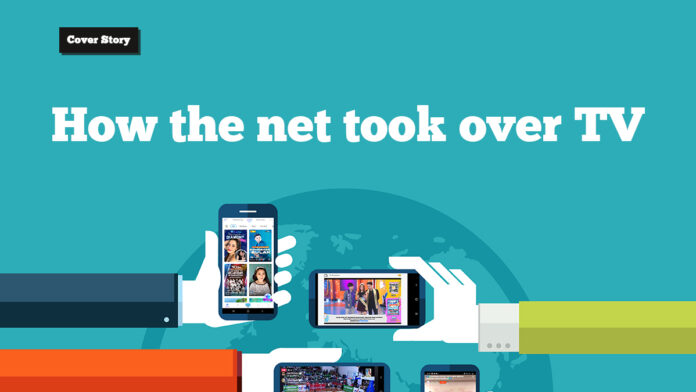Streaming has changed the way we consume video content. From subscription-based video streaming to interactive live streaming, this new trend has made us tune in more to the internet than the usual television shows.
The pandemic has also magnified our consumption of streaming content. In a study conducted by Forbes in 2021, at least 48% of US online adults were subscribed to at least one streaming service. Meanwhile, a report by the Los Angeles Times pegged video streaming subscriptions to 1.1 billion worldwide.
Streaming has shifted video demand from offline to online. In the same Forbes analysis, they noted that normal television viewing time (in the US) decreased from 13 hours on average per week to now 8.6 hours, while video consumption has gone up to 7 hours from 1.7 hours average prior to the pandemic.
While video streaming is TV’s main competitor, it isn’t the only form that has gained traction post-pandemic.
Streaming to the world

In a report by Statista, in 2020, users around the world spent 480 billion hours watching live streaming content; in 2021, it was seen to reach 550 billion hours. In 2020, the Middle East and Africa consumed the most live stream content, followed by the Asia-Pacific region coming in second, and North America rounding out the top three.
The major driving force was gaming, with gamers tuning in to their favorite streamer for entertainment or watching esports tournaments. But games do not have a monopoly on live streaming.
Recent trends indicate that people also favor watching “Just Chatting” or streamers simply interacting with viewers and fans. Also included in this category are the few live-streamed podcasts where listeners can actually see their favorite podcaster and guests live. They also have the opportunity to completely visualize what the host is describing with production often showing the subject live.
Then there’s the rising star in the streaming world, live selling. In another Statista study, it was reported that 17% of live selling interest is from the Asia-Pacific, followed by UAE with 16%. This trend has prompted e-commerce platforms such as Lazada, and Shopee to create their own dedicated live selling platforms. But live selling thrives not on e-commerce platforms but on social media sites like Facebook or even Tiktok’s new live streaming feature, where the stream is easily shared by friends to be seen by other people.
Also, livestreaming is not limited to the internet. Somehow, traditional television has found a way to be part of the shift.
Meet Kumu and PIE, local interactive streaming

Even prior to the pandemic, traditional television had started exploring options for live streaming. What came out was a collaboration between traditional TV and new streaming.
Social media played a part in the collaboration, with traditional media initially integrating social media interactions with news and other forms. They started catering to trends, even incorporating their own hashtags to reach top trending.
It is this back and forth interaction that is featured in the Philippine Inactive Entertainment Channel of the PIE Channel, a collaboration between 917Ventures and ABS-CBN. They live stream shows simultaneously on Youtube and traditional media, taking social media interactions as part of the interactivity.
How it works is that you watch in tandem on your mobile device with the PIE website open. There you are given questions that would affect what would happen to the show. Answering the questions also enters you into raffle draws to win cash prizes.
PIE wasn’t the first to do this, as prior to the internet, game show viewers were asked to use SMS to send in correct answers to win prizes.
Another app, kumu, has found a way to integrate live streaming with traditional media.
Kumu itself is a live streaming app, founded back in 2018. It changed the local media scene when ABS-CBN started using it for its shows and, more recently, for fund-raising projects.
They manage this by using kumu’s in-app currency such as kumu diamonds and kumu coins. These in-app currencies can be bought using real-world cash. Whereas other streaming platforms do not allow exchanges back to real-world cash, kumu does, and streamers can earn money from the kumu coins or diamonds they receive as gifts from viewers
In the same way that traditional media utilized SMS to interact with audiences before widespread internet access, ABS-CBN utilizes kumu diamonds as a way for audiences to vote during game shows. It also utilizes the platform for its stars to interact with fans. Beyond actors, the platform is also now being used by volleyball players to reach out to fans, live streaming their lives post-game or providing small updates. They also use it to give brief Q&As to fans, giving them the rare opportunity to interact, often not available on game days.
Streaming in general has changed the way we consume media. We share, we appreciate, and we interact with streams — pioneering new forms of social entertainment.
Words by Gabriel Pe
Also published in Gadgets Magazine July 2022 Issue
